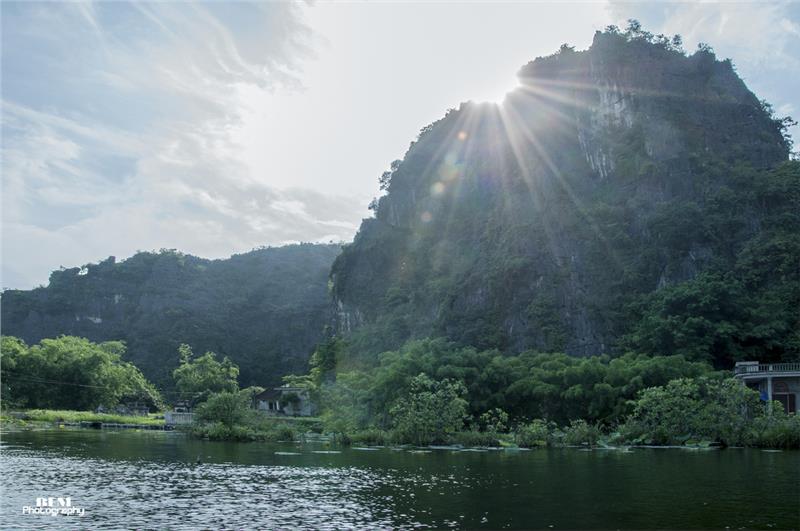As located at the boundary of three geographical areas: Northwest, Red River Delta and North Central Coast, Ninh Binh weather is mainly characterized by Weather in Red River Delta. This province is also situated at the T-junction of economic regions: Hanoi, Northern coastal area and North Central Coast. Ninh Binh is bordered with Hoa Binh, Ha Nam in the north, Nam Dinh in the east crossing Day River, Thanh Hoa in the west, and the Gulf of Tonkin in the southeast. The center of this province is Ninh Binh City, about 93 km to the south of Hanoi. With the advantages of geography and climate, Ninh Binh used to be chosen as the capital of Vietnam in the tenth century, as well as an important military area over the periods of Dinh, Le, Ly, Tran, and Tay Son dynasties. With a special position in terms of traffic, terrain and culture and history, Ninh Binh is a province with rich and diverse tourism potential. Ninh Binh is regarded as a "mini Vietnam".

In the dry season, from November to March, the weather in Ninh Binh is cold and wet, even foggy sometimes. The average temperature ranges from 19°C to 26°C, ascending in the early months of a year, high humidity of 75-85%, and rainfall of 21-80mm. From April to October is the rainy season. In this season, the average temperature fluctuates from 25-32 °C, reaching the highest point in July, and the one lowest in April.
As being located in Northern Vietnam, Ninh Binh climate is portrayed by the tropical monsoon one, with an annual average temperature of about 24.2°C; rain mode is divided into two distinct seasons: rainy season in summer, accounting for 85% of the total rainfall, dry season with rainfall about 15%. The average precipitation is 1,800 mm, unevenly distributed in a year, but distributed evenly over the entire area; the average tidal of 1.6 m to 1.7 m. In general, climate and hydrological regimes are relatively favorable for economic and social development. The climate in Ninh Binh is the humid subtropical climate: hot, humid and rainy in summer from May to September; cold dry in winter from November to March; April and October are the transition periods as spring and autumn. However, it is not remarkable as other areas located above the tropical belt. The average rainfall ranges from 1700-1800mm. The temperature averages about 23.5°C with total hours of sunshine is 1600-1700 hours. The average humidity is 80-85%.

Ninh Binh is one of places in Vietnam suitable to travel at any time in a year. Ninh Binh has its own beauty in each period with moderate levels of humidity and temperature. However, the best time to travel Ninh Binh is between March and October. During this time, the landscapes in Ninh Binh are at their best. At this point, you can now enjoy unforgettable experiences with friends and relatives. Coming to Ninh Binh during this time, you will have chances to contemplate lush green paddy fields and other beautiful landscapes. By virtue of advantageous position and climate, landscapes in Ninh Binh are diverse. For example, mountainous and hilly areas in the northwest include districts of Nho Quan, Gia Vien Hoa Lu, and Tam Diep. It has a peak of Silver Cloud (648 m), the highest mount in Ninh Binh. The coastal plain in the southeast belongs to Kim Son and Yen Khanh districts. The terrain in Ninh Binh creates second-to-none scenery in Vietnam. In addition, Ninh Binh possesses Cuc Phuong National Park with various flora and fauna system. Ninh Binh also has an 18-km coastline. The coastline of Ninh Binh annually is silted, triggering over 100-meter spread seawards. The coastal area of Ninh Binh is recognized as the world biosphere reserve by UNESCO. There are 2 islands in Ninh Binh: Con Noi (Floating Island) and Con Mo (Faded Island).
